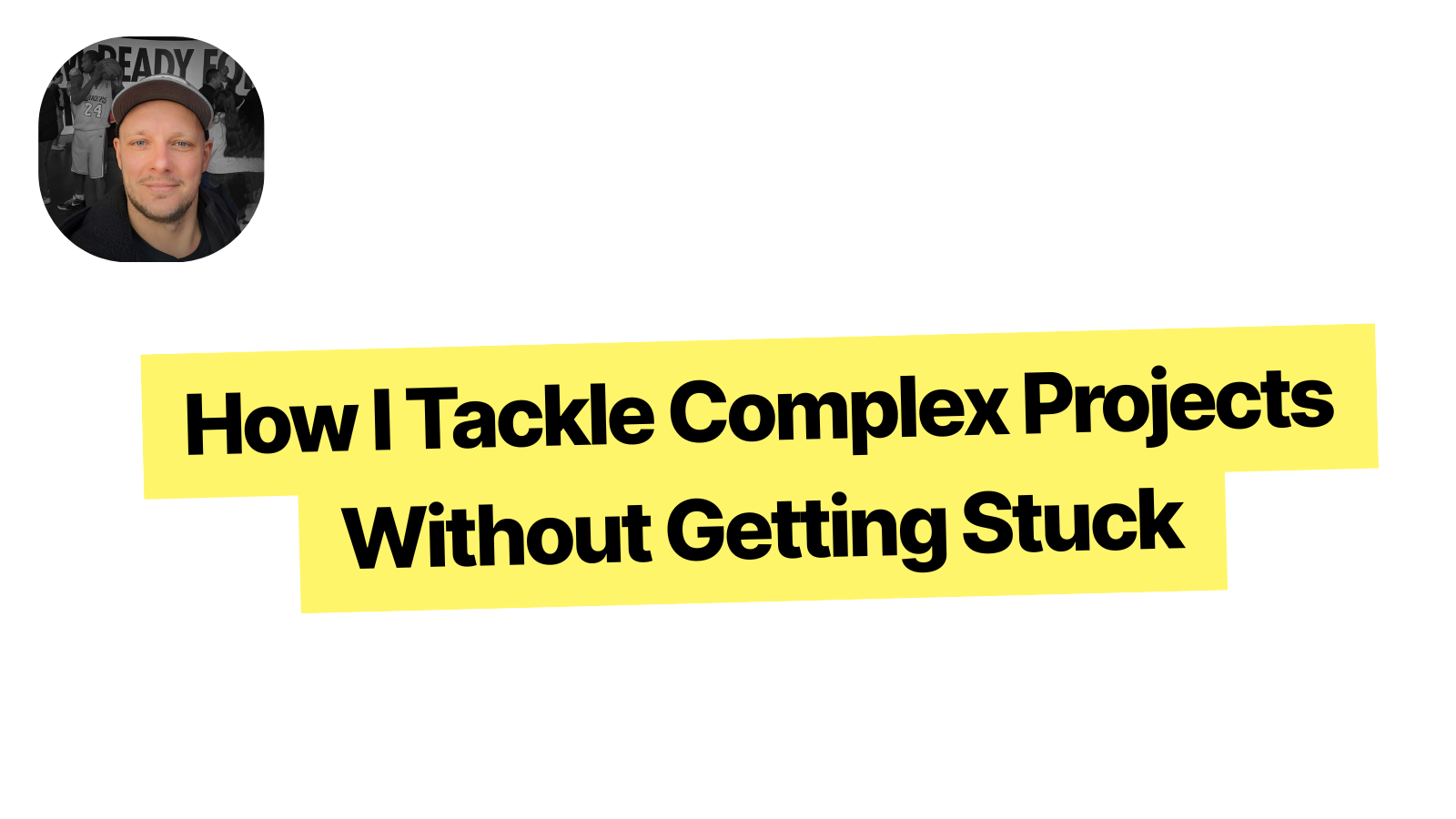
How I Tackle Complex Projects Without Getting Stuck
Tackling complex projects can feel overwhelming. I’ve found that breaking down the problem into manageable parts while staying mindful of potential challenges is the best way to approach it. Here’s how I do it.
On this page
The Approach
Break the Problem into Smaller Parts
My first step is to divide the problem into smaller, more manageable subproblems. Complex tasks often look daunting because they’re too broad. By breaking them down, you can focus on specific, achievable goals.
Assess the Difficulty of Each Subproblem
Once I have a list of subproblems, I take a moment to evaluate each one. Some will be straightforward, while others might seem challenging. Assessing the difficulty helps you prioritize and plan your approach.
Tackle the Hardest Problem First
I usually start with the most challenging subproblem, or the one with the most unknowns. Addressing the hardest part early can prevent you from investing time into easier tasks only to hit a major roadblock later on.
Break Down the Difficult Parts Further
If one of the subproblems seems too complicated, I break it down even further. This iterative breakdown helps reduce the complexity to something more manageable. It’s essential to keep breaking down the problem until you can clearly see a path forward.
Keep the Bigger Picture in Mind
Following this method not only helps me get started but also ensures that I’m considering the bigger picture from the beginning. By tackling the hardest parts first, you reduce the risk of discovering late in the process that something is impractical, expensive, or even impossible.
By dividing, assessing, tackling, and breaking down, I can approach any complex project with a clear and effective strategy.
Benefits of This Approach
One of the biggest benefits of this approach is that it gets me unstuck from analysis paralysis. Breaking the project into well-defined, smaller problems with clear outcomes makes it much easier to get started.
Additionally, clearly dividing the problem into subproblems naturally leads to more modular code. This modular approach helps in organizing the code better and makes maintenance easier down the line.
Finally, thinking in terms of subproblems pushes me to consider inputs and outputs early on. This mindset encourages designing components that have clear interfaces, ultimately leading to a more cohesive system.
AI Workflow tips
I always save the breakdown results into a markdown document. It serves as structured context when working with AI tools, whether I’m coding or analyzing data. This simple step helps me get more accurate and relevant assistance.